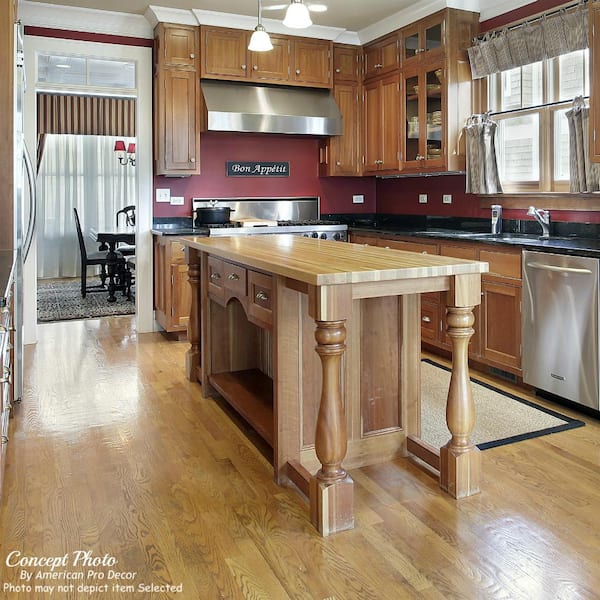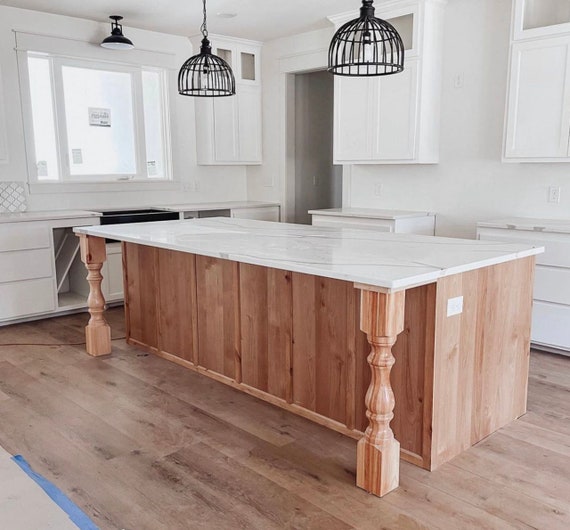The Very Best Kitchen Island Leg Options for Modern and Conventional Kitchens
The Very Best Kitchen Island Leg Options for Modern and Conventional Kitchens
Blog Article
Checking Out the Vital Functions of a Kitchen Island Leg for Your Culinary Space
The kitchen area island serves as a main hub in any type of culinary area, and the choice of leg layout is critical in boosting both its capability and aesthetic appeal. Comprehending the important attributes of kitchen island legs-- consisting of product choices, design styles, and stability variables-- can considerably influence the overall experience within the kitchen area.
Significance of Kitchen Island Legs
Kitchen area island legs play an essential duty in both the functionality and aesthetics of a kitchen area. They not just sustain the weight of the island but likewise boost the total style, contributing to the cooking area's aesthetic appeal. The choice of legs can dictate the style of the cooking area, be it modern-day, traditional, or rustic.
Functionally, robust and correctly created legs ensure security, enabling the secure usage of the island for various tasks such as food preparation, dining, or amusing. Strong legs protect against wobbling and shifting, supplying a trusted surface area for day-to-day tasks.
In addition, the elevation and positioning of the legs can affect the convenience level for those seated at the island. A well-considered height can fit bar stools or chairs, promoting a welcoming environment for celebrations.
Along with these practical considerations, kitchen island legs can work as a prime focus in the room (kitchen island leg). Decorative or uniquely designed legs can elevate the layout visual, making the island a centerpiece. Therefore, choosing the best kitchen island legs is vital for stabilizing form and feature in any cooking area
Product Options for Legs
Picking the appropriate material for kitchen area island legs dramatically affects both durability and design. Typical material options consist of steel, stone, and wood, each offering distinct benefits.
Wood is a popular selection because of its warmth and convenience. It can be quickly customized to match numerous design designs, from rustic to contemporary. Hardwoods like oak and maple give exceptional strength and long life, while softer woods can be extra susceptible to tear and use.
Steel legs are favored for their streamlined, contemporary visual. kitchen island leg. Stainless steel and light weight aluminum are not only durable but additionally resistant to corrosion and corrosion, making them ideal for kitchen area environments. They can produce a commercial look and are often offered in various surfaces to enhance other cooking area components
Rock legs, such as granite or marble, include an element of luxury and security. While much heavier than other products, they provide exceptional longevity and can endure significant weight. However, they may need added assistance to guarantee appropriate equilibrium.
Inevitably, the option of material need to line up with both functional needs and the general design vision of the cooking area room, making certain that the island legs boost both utility and appearances.
Style Designs to Consider
What layout styles should be taken into consideration when choosing legs for a cooking area island? The option of leg style dramatically affects the general aesthetic of your cooking area. For a modern kitchen area, streamlined and minimalistic leg designs, such as stainless-steel or geometric shapes, can improve the modern charm, offering a tidy and uncluttered appearance.
In contrast, standard kitchen areas gain from traditional styles such as turned or sculpted wooden legs, which include heat and character. These alternatives commonly feature complex details that complement vintage furnishings. For a rustic atmosphere, think about legs made from recovered timber or functioned iron, which bring an organic, natural high quality to the room.
If you lean towards an industrial style, durable steel legs with a troubled finish may be excellent, offering an edgy yet innovative touch. In addition, farmhouse design cooking areas can incorporate chunky legs that stimulate a feeling of toughness and homeliness.

Elevation and Stability Aspects
The height and stability of a kitchen area island are critical elements that directly impact its performance and customer experience. An ideal kitchen island leg should provide enough elevation to fit a range of tasks, from food preparation to laid-back dining.
Stability is just as essential, particularly as kitchen islands often act as centerpieces in cooking settings. A stable leg design minimizes tottering and changing, which can lead to accidents or pain throughout usage. Materials such as solid wood, metal, or a mix thereof are commonly used to official site attain the essential toughness. The leg's add-on to the island's base need to be protected, ensuring longevity and strength against the wear and tear of daily usage.
Modification and Accessories
Modification choices and devices for kitchen area island legs can significantly boost both the aesthetic allure and functionality of the room. Property owners can select from a range of materials, consisting of rock, wood, and steel, enabling seamless combination with existing cooking area design. The selection of finish-- be it an all-natural stain, paint, or powder coating-- additional individualizes the look, making sure that the island enhances the general design motif.
Along with material and finish, home owners may likewise discover the incorporation of accessories such as attractive brackets, flexible feet, or incorporated shelving. Brackets can provide extra support while contributing to a rustic or modern-day aesthetic. Adjustable feet are especially valuable for unequal floor covering, ensuring the island remains steady and level, which is crucial for both safety and functionality.

Conclusion
Finally, cooking area island legs offer an important duty in providing stability and boosting the total aesthetic of the culinary area. The option of products and design styles contributes to both performance and visual charm, while factors to consider of elevation and stability guarantee functional usage. Personalization choices and devices can raise the cooking area island, making it a distinct focal factor within official source the home. Thus, mindful consideration of these features is necessary for a reliable cooking area layout.
The cooking area island offers as a central hub in any cooking space, and the choice of leg design is pivotal in boosting both its capability and aesthetic charm. Comprehending the vital features of kitchen island legs-- consisting of product alternatives, layout styles, and security elements-- can considerably impact the total experience within the kitchen area.Kitchen island legs play a crucial duty in both the performance and appearances of a cooking area area.What design styles should be taken into consideration when selecting legs for a kitchen island?In verdict, kitchen island legs offer an important function in offering stability and improving the overall visual of the culinary room.
Report this page